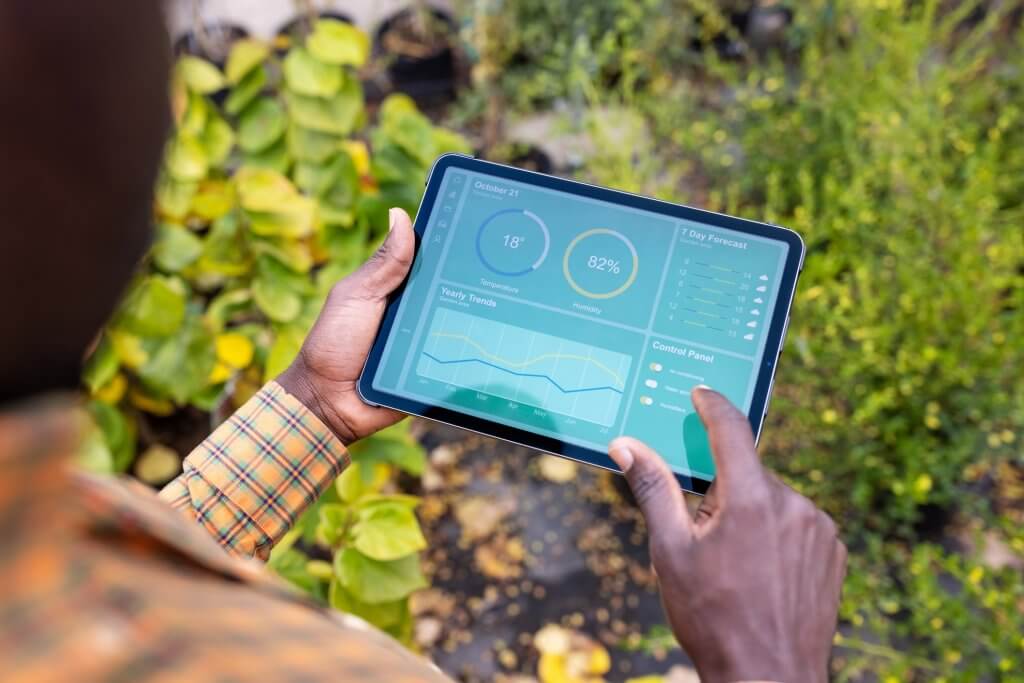14.01.2025 by Infogram
Climate change, biodiversity loss, and pollution concerns dominate the media more than ever before. Data is an integral part of reporting on these manners and presenting environmental data effectively is key. Here, data visualizations offer a powerful medium to transform complex datasets into compelling narratives that inform and inspire action. From illustrating global climate change indicators to comparing different regions’ coastline deterioration rates, environmental data visualizations can be powerful information sources when communicating complex issues to the public. That’s why in this article, we’ll explore how to leverage data visualizations for showcasing environmental data effectively, including chart types, tips, challenges, and tools like Infogram for effective visualizations.

Data visualizations for driving environmental action
Data visualizations don’t just inform—they persuade and inspire action. This is especially important when talking about climate change or pollution levels as these manners require immediate recognition and action in order to change the course of developments that impact the world. Ultimately, an effective visualization can turn complex datasets into compelling stories, driving home the urgency of these challenges in ways data alone cannot.
Here’s why data visualizations are essential in shaping perceptions and fostering action:
Simplifying complexity
Environmental challenges often involve complex data sets, from global temperature trends to biodiversity loss patterns. Effective visualizations should transform these complexities into easily understandable formats, using clear visuals to highlight key insights. By presenting the data in a straightforward way, visualizations help audiences—whether scientists, policymakers, or the general public—quickly understand the issues at hand, making complex concepts accessible to all.
Building awareness
Many environmental problems, such as microplastic pollution in oceans or trends in endangered species populations, often go under the radar due to their technical nature or lack of visibility. Thoughtful and impactful visualizations can bring these issues to light, bridging the gap between data and emotional resonance. By creating visual narratives, data visualizations can highlight critical problems, creating greater awareness among different audiences.
Driving policy and action
Data-driven visuals can be useful in shaping policies and driving impactful action. A compelling chart or infographic can cut through noise, providing clear evidence that convinces the public to prioritize and act on environmental issues. Whether it’s showing the economic benefits of renewable energy or highlighting the health impacts of air pollution, visuals translate complex data into persuasive arguments that drive regulations, resource allocation, and systemic change.
Engaging the public
Last but not least, compelling visual stories have the ability to captivate audiences, gaining visibility on social media platforms and in the press. Eye-catching graphics, such as maps showing rising sea levels or charts depicting wildlife population declines, can spark conversations and raise awareness. By reaching a wide audience through engaging visuals, these tools encourage people to participate in initiatives and adopt sustainable practices.

By considering all the aforementioned factors, it’s clear that effective data visualizations play a key role in communication. Now, let’s explore ways to make these visualizations truly impactful.
Chart types for visualizing environmental data
Have you ever struggled to choose the right chart type for your dataset? Choosing the right visualization becomes even more critical when working with environmental data, as it can impact how your audience responds to the information presented. To make this process easier, consider the following suggestions based on the nature of your data:
1. Temporal trends
If your data involves changes over time, use these chart types to clearly highlight patterns and progressions:
- Line charts: Perfect for illustrating data over time, such as temperature changes, CO2 emissions, or deforestation rates.
- Area charts: Show cumulative trends, like renewable energy capacity growth or population exposed to environmental risks.

2. Spatial data
When working with geographically distributed data, these visualizations will help you communicate location-based insights more effectively:
- Maps: Heatmaps or chloropleths work well for geographic data, such as pollution hotspots or species distribution.
- 3D visualizations: Ideal for showcasing global phenomena like ocean currents or carbon footprint distribution.
3. Comparative analysis
For datasets that emphasize comparisons, these chart types can highlight differences clearly and effectively:
- Bar charts: Effective for comparing emissions across industries, regions, or years.
- Radar charts: Useful for presenting multidimensional environmental performance metrics.
4. Distributions and patterns
To showcase trends or relationships in your data, try these visualizations:
- Histograms: Excellent for analyzing pollution level distributions or rainfall patterns.
- Scatter plots: Helpful in finding relationships, such as between urbanization and air quality.
5. Proportions and ratios
To showcase how parts contribute to a whole, these charts are particularly effective:
- Pie charts and donut charts: Illustrate proportions, such as renewable vs. non-renewable energy usage.
- Tree maps: Show hierarchical proportions, like biodiversity contributions by region.
Still unsure what type of chart suits your data best? Try Infogram’s AI-powered chart suggestion feature. This feature streamlines the process by automatically analyzing your data and suggesting the most suitable chart types in just a few clicks. Simply upload your data spreadsheet or copy and paste it, and the AI will recommend the best charts to effectively convey your information. Learn more here!
Data visualization tips for environmental data
Selecting a suitable chart type for your environmental data is a fundamental step in creating visualizations that resonate with your audience. However, other equally important aspects also play a key role in determining the overall effectiveness of your message and how well it communicates the data’s story.
Let’s explore key tips for visualizing your data!
1. Know your audience
Tailor the visualization complexity and aesthetics based on your audience, whether it’s policymakers, academics, or the general public.

2. Focus on the story
Lead with the insight, not the data. Ensure every visualization serves the story you’re telling—whether it’s rising sea levels or the success of conservation projects.
3. Use color wisely
Make sure to use colors that are intuitive and meaningful, such as green for forests or red for danger. Furthermore, make sure you have sufficient contrast for readability.

4. Simplify without oversimplifying
Avoid clutter but ensure critical details aren’t lost. Annotate key takeaways directly on the visualization.
5. Interactive features
Allow viewers to explore data interactively, such as drilling down into specific locations or adjusting parameters to see impacts.
Infogram for environmental data visualizations
Infogram is a powerful data visualization tool designed to make data more accessible, engaging, and effective. Here’s how you can use Infogram for communicating environmental data:
1. AI-powered chart suggester
Infogram’s AI chart suggester analyzes your dataset and recommends the most suitable chart types. Whether you’re presenting trends in energy consumption, biodiversity metrics, or pollution levels, the AI feature minimizes guesswork, helping you create visuals that highlight the most critical insights.
2. AI infographic maker
Turn environmental data into compelling visualizations with Infogram’s AI-powered infographic maker. By automating design, layout, and formatting, the tool lets you focus on creating impactful stories. The end result is a professional, visually appealing infographic tailored to storytelling, perfect for education, advocacy, or public awareness campaigns.
3. Interactive visuals
Infogram goes beyond static visuals with interactive elements. You can create clickable maps to showcase deforestation hotspots, animated charts to depict CO2 emission trends, or real-time data visualization that showcase air quality changes. These dynamic features allow your audience to dive deeper into the data, explore patterns on their own, and gain a more comprehensive understanding of environmental issues.
4. Custom branding and templates
We know, consistency is key. With Infogram, you can tailor colors, fonts, and logos to align with your brand’s identity and highlight messaging. Whether you’re representing a conservation nonprofit, an academic institution, or a governmental agency, these tools help ensure a professional and cohesive presentation of your data.
5. Accessibility and shareability
Infogram allows you to export your visualizations in various formats, including web embeds, print-ready files, and social media-friendly designs. This flexibility is great for sharing environmental insights and making sure you reach the right audience through the right channels. By simplifying the process of sharing your data, Infogram maximizes impact of your message.

Transform environmental data with Infogram
Effectively visualizing environmental data is not just an art—it’s a critical tool for tackling the planet’s most pressing challenges. By selecting the right chart types, following visualization best practices, and using Infogram, we can translate complex environmental datasets into impactful stories. These visuals have the power to inform and inspire action, mobilize communities, and drive meaningful change toward a sustainable future.
Ready to transform your environmental data into a compelling story? Explore Infogram today and start making a difference.
Get data visualization tips every week:
New features, special offers, and exciting news about the world of data visualization.